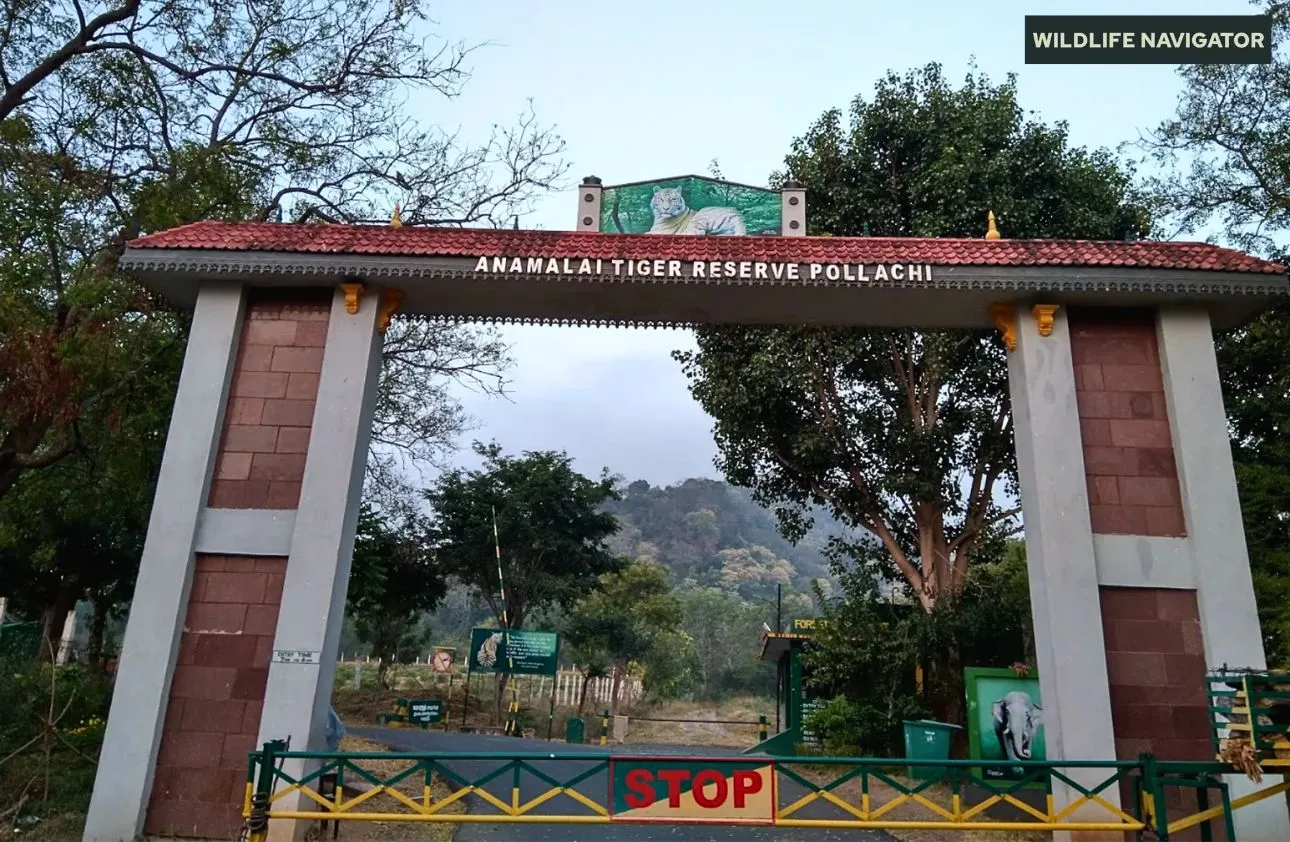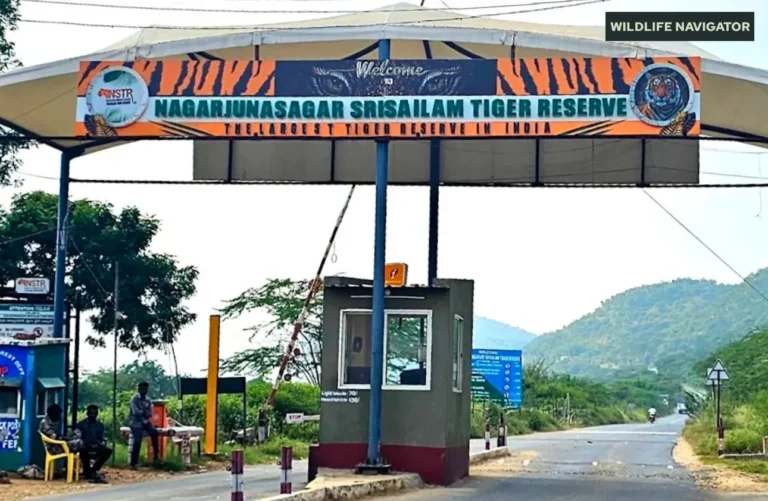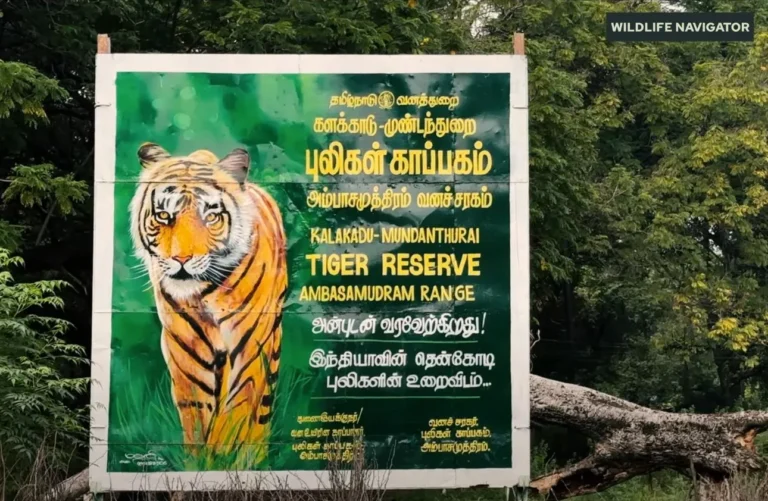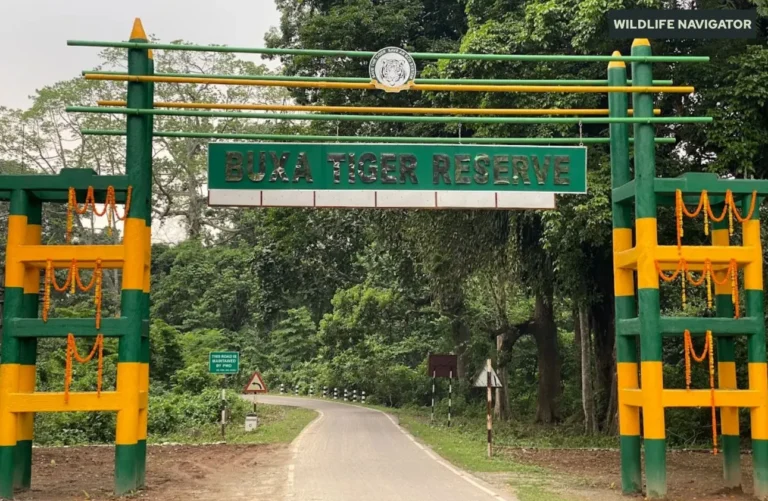Anamalai Tiger Reserve: Explore Tamil Nadu’s Wildlife Haven

Anamalai Tiger Reserve (ATR) stands as one of Tamil Nadu’s most captivating wildlife destinations, tucked within the lush folds of the Western Ghats. Formerly known as the Indira Gandhi Wildlife Sanctuary and National Park, this pristine reserve shelters an incredible diversity of flora and fauna. Declared as a Tiger Reserve in 2008, Anamalai became the 29th Tiger Reserve of India under the prestigious Project Tiger initiative.
Spread across the Coimbatore and Tiruppur districts, the reserve is a living mosaic of tropical rainforests, misty hills, and serene valleys that form part of the globally significant Western Ghats UNESCO World Heritage Site. Beyond its natural beauty, Anamalai plays a vital role in safeguarding endangered species such as the Bengal tiger, lion-tailed macaque, and Nilgiri langur, while promoting sustainable coexistence with indigenous tribal communities.
A visit here is not just about wildlife spotting—it’s a journey into the heart of one of India’s richest ecosystems, where every rustle in the forest tells a story of survival and harmony.
History and Establishment
The story of Anamalai Tiger Reserve is deeply rooted in India’s evolving conservation movement. Originally declared as the Anamalai Wildlife Sanctuary in 1976, the region was recognised for its remarkable biodiversity and ecological importance within the Western Ghats. Later, in 1989, a core part of this sanctuary was upgraded to form the Indira Gandhi National Park, named after the late Prime Minister who had a strong vision for wildlife protection.
As conservation priorities grew, the area gained national significance for its thriving populations of elephants, tigers, and endemic species. This led to its declaration as a Tiger Reserve in 2008, becoming the 29th Tiger Reserve of India under the Project Tiger program. The move marked a significant milestone in Tamil Nadu’s wildlife conservation history, strengthening the protection of its critical habitats and corridors.
Anamalai’s landscape is ecologically connected to the Parambikulam Tiger Reserve in neighbouring Kerala, forming one of South India’s most vital transboundary wildlife complexes. This seamless forest stretch ensures safe movement for wide-ranging species like tigers and elephants, making it a stronghold of biodiversity and a model for integrated ecosystem management in the Western Ghats.
Geography and Landscape
Sprawling across an impressive 1,479 square kilometres, Anamalai Tiger Reserve is a stunning expanse of hills, valleys, rivers, and dense forests that form a vital part of the southern Western Ghats. The name Anamalai translates to “Elephant Hills,” aptly describing the region’s terrain and the majestic presence of its largest resident — the Indian elephant.
The reserve’s elevation varies dramatically from 340 meters to over 2,500 meters above sea level, creating a wide range of microclimates and vegetation zones. This altitudinal diversity supports tropical moist evergreen forests in the lowlands, semi-evergreen and deciduous forests in the mid-elevations, and unique shola-grassland ecosystems in the higher ranges.
Numerous rivers and streams originate here, including the Aliyar, Nirar, and Sholayar, which not only sustain wildlife but also serve as lifelines for downstream agriculture and human settlements. The landscape is dotted with scenic viewpoints, waterfalls, and reservoirs like Aliyar Dam and Amaravathi, offering breathtaking vistas that blend wilderness and serenity.
With its mosaic of habitats, ranging from bamboo thickets to montane rainforests, Anamalai serves as an ecological bridge between Tamil Nadu and Kerala’s forest tracts — a sanctuary where nature thrives in its most pristine form.
Flora: The Green Heart of Anamalai
Anamalai Tiger Reserve is a treasure trove of plant diversity, shaped by its wide altitudinal range and varied climatic conditions. The vegetation types here represent almost every forest form found in the Western Ghats — from tropical lowlands to high-altitude evergreen stretches.
Major Vegetation Types:
- Tropical moist evergreen forests
- Semi-evergreen forests
- Dry deciduous forests
- Montane shola forests
- Grasslands and bamboo brakes
Prominent Plant Species:
- Teak (Tectona grandis)
- Rosewood (Dalbergia latifolia)
- Sandalwood (Santalum album)
- Bamboo and Cane brakes
- Terminalia, Albizia, and Syzygium species
- Unique shola-grassland flora, including wild balsams, orchids, and ferns
These lush forests not only stabilise the local climate but also provide crucial habitat for hundreds of animal and bird species, making Anamalai a living green museum of biodiversity.
Fauna: A Sanctuary of the Wild
Anamalai’s forests bustle with life, hosting a spectacular range of mammals, birds, reptiles, and insects — many of which are endemic to the Western Ghats.
Key Mammals:
- Bengal Tiger (Panthera tigris tigris)
- Indian Elephant (Elephas maximus indicus)
- Leopard, Sloth Bear, and Wild Dog (Dhole)
- Gaur (Indian Bison) and Sambar Deer
- Lion-tailed Macaque and Nilgiri Langur – iconic Western Ghats primates
- Malabar Giant Squirrel and Small Indian Civet
Notable Birdlife:
- Great Indian Hornbill
- Malabar Pied Hornbill
- Malabar Trogon
- Grey-headed Bulbul
- Nilgiri Wood Pigeon
- Black Eagle and Crested Serpent Eagle
Reptiles and Amphibians:
- King Cobra
- Indian Rock Python
- Malabar Pit Viper
- Several endemic frogs and geckos are found only in the Western Ghats
With over 2,000 species of plants and 500+ animal species, Anamalai Tiger Reserve stands as one of India’s richest biodiversity zones — a vibrant ecosystem where nature flourishes in full harmony.
Safari Experience and Zones
Exploring Anamalai Tiger Reserve is a captivating experience that blends adventure, serenity, and education. The forest department has designed a range of safari and eco-tourism activities that allow visitors to witness the wilderness responsibly while supporting local conservation efforts.
Jeep Safari
The Jeep Safari is one of the most popular ways to explore the dense forests and open grasslands of Anamalai. Operated by the Tamil Nadu Forest Department, these guided rides usually begin from Topslip, the main tourism hub of the reserve.
During the safari, visitors can spot gaurs, sambar deer, malabar giant squirrels, and occasionally the elusive tiger or leopard. The experienced forest guides share insights on animal behaviour, vegetation, and the fragile balance of the ecosystem.
Popular Safari Routes:
- Topslip–Ambuli Watchtower Trail
- Topslip–Karian Shola Route
- Topslip–Varagaliyar Sector
Each route offers a unique landscape — from dense teak forests to panoramic viewpoints overlooking the Anamalai Hills.
Elephant Safari
The Elephant Safari, though limited, provides a memorable forest experience. Conducted under strict supervision at Topslip Elephant Camp, these short rides offer tourists a chance to see wildlife from a safe height while understanding the role of trained elephants in patrolling and forest management.
It’s not just a tourist attraction — the camp also serves as a rehabilitation and care centre for captive elephants, emphasising ethical wildlife interaction and awareness.
Nature Walks and Trekking Trails
For those seeking a deeper connection with nature, Anamalai offers several guided nature trails and trekking routes that take you through serene forests, riverbanks, and tribal settlements.
Popular Trails:
- Karian Shola Trail – Ideal for birdwatching and butterfly spotting
- Varagaliyar Trail – Offers scenic views of waterfalls and forest valleys
- Topslip–Ambuli Trail – Perfect for moderate-level trekking enthusiasts
These treks are led by trained eco-guides, often from local tribal communities, ensuring visitors gain ecological knowledge while supporting community-based conservation.
Eco-tourism and Interpretation Centre
The Eco-tourism Interpretation Centre at Topslip offers interactive exhibits, wildlife information panels, and models showcasing the park’s biodiversity. Visitors can learn about Project Tiger, conservation challenges, and the importance of preserving the Western Ghats ecosystem.
Safari Entry Points
- Topslip (Main Gate): Primary access point with reception centre, booking office, and forest lodges.
- Sethumadai: Secondary entry point, quieter and less crowded.
- Valparai: Hill route entry through tea estates, suitable for scenic drives and treks.
In Anamalai, safaris are not just about spotting animals — they are immersive journeys through ancient forests that nurture life at every step. Whether it’s the call of a hornbill echoing through the canopy or the rustle of an elephant herd in the distance, every moment here brings you closer to nature’s raw beauty.
Conservation and Ecotourism
Anamalai Tiger Reserve plays a crucial role in conserving the biodiversity of the Western Ghats, one of the world’s eight “hottest” biodiversity hotspots. Managed under Project Tiger, the reserve focuses on protecting its core wildlife habitats while promoting sustainable coexistence with local communities.
Key conservation initiatives include:
- Habitat management and anti-poaching patrols to ensure safe movement for tigers and elephants.
- Corridor protection linking Anamalai with Parambikulam and Eravikulam reserves.
- Community-based eco-development programs that involve indigenous tribal groups like the Malasar and Kadar, providing them with livelihood through eco-tourism, guiding, and handicrafts.
- Eco-restoration projects to control invasive plants and restore native vegetation.
Through responsible tourism, awareness campaigns, and strict conservation measures, Anamalai Tiger Reserve sets an inspiring example of how wildlife protection and community welfare can thrive together.
How to Reach Anamalai Tiger Reserve
Reaching Anamalai Tiger Reserve is convenient, with good connectivity by air, rail, and road from major cities of Tamil Nadu and Kerala. The main entry point for visitors is Topslip, located near Pollachi town.
By Air
- Nearest Airport: Coimbatore International Airport – approximately 90 km from Topslip.
- Regular flights operate from Chennai, Bengaluru, Kochi, and other major cities.
- Taxis and buses are available from Coimbatore to Pollachi and onward to Topslip.
By Train
- Nearest Railway Station: Pollachi Junction – about 35 km from the reserve.
- Connected to Coimbatore, Palakkad, Madurai, and Dindigul.
- From Pollachi, tourists can hire cabs or take local buses to Sethumadai or Topslip.
By Road
- Pollachi to Topslip: 35 km (approx. 1 hour drive).
- Coimbatore to Topslip: 90 km via Pollachi.
- Well-maintained roads through coconut groves, villages, and forest fringes make the drive scenic and enjoyable.
- State transport buses and private vehicles operate frequently between Pollachi–Sethumadai–Topslip.
Entry Points
- Topslip Gate: Main access for safaris, accommodation, and the forest office.
- Sethumadai Gate: Ideal for a quieter entry and quick access to the buffer zone.
- Valparai Route: A picturesque hill road leading through tea estates and viewpoints.
Accommodation Options in & Around ATR
Visitors to Anamalai Tiger Reserve can choose from a range of accommodations — from forest guest houses and eco-lodges to private resorts in nearby towns. Staying close to the reserve enhances your safari experience and provides early access to wildlife zones.
Forest Department Guest Houses and Lodges
The Tamil Nadu Forest Department manages several guest houses and eco-lodges, offering a safe and convenient stay within or near the reserve. These are ideal for nature enthusiasts and wildlife photographers.
Options & Approximate Costs:
- Topslip Forest Lodge: ₹2,500 – ₹4,500 per night (AC/Non-AC rooms)
- Sethumadai Forest Rest House: ₹1,800 – ₹3,000 per night
- Valparai Forest Lodge (Reserve Buffer Zone): ₹3,000 – ₹5,000 per night
Note: Booking must be done online via the Tamil Nadu Forest Department website or through authorised forest offices.
Eco-Lodges and Private Resorts
For a more comfortable stay, several eco-lodges and resorts near Pollachi and Valparai provide modern amenities while maintaining a nature-friendly ethos. These are perfect for families and travellers seeking a mix of luxury and wilderness.
Popular Options & Approximate Costs:
- Topslip Eco Lodge: ₹3,500 – ₹6,000 per night
- Valparai Tea Estate Resorts: ₹4,000 – ₹7,500 per night
- Pollachi Homestays & Boutique Hotels: ₹2,000 – ₹4,500 per night
These accommodations often provide guided treks, nature walks, and local cuisine, making the stay immersive and informative.
Tips for Booking
- Advance booking is recommended, especially during November to April, the peak tourist season.
- Carry your ID proof and confirm safari or trek timings with the forest office.
- Eco-lodges and forest guest houses prioritise eco-friendly practices — minimal plastic use, waste management, and wildlife-friendly lighting.
Staying within or near the reserve ensures you get the early morning safari advantage, where wildlife sightings are at their peak, and the forest comes alive with the sounds of birds, elephants, and tigers.
Best Time to Visit Anamalai Tiger Reserve
Timing your visit to Anamalai Tiger Reserve can make a huge difference in both wildlife sightings and overall experience. The reserve experiences tropical and montane climates, which influence accessibility and animal activity throughout the year.
Ideal Season
- November to April is the best period to visit.
- Winters and early summers offer pleasant weather, making safaris and treks comfortable.
- Wildlife is more active during cooler mornings and evenings, increasing chances of spotting tigers, elephants, and other wildlife.
Seasons to Avoid
- Monsoon (June to September): Heavy rainfall makes forest trails slippery, rivers swell, and safari operations may be restricted.
- Extremely hot months (May to early June) can make outdoor activities uncomfortable, though wildlife can still be observed near water sources.
Tips for Wildlife Observation
- Early morning safaris (6:00–10:00 AM) are ideal for predator sightings.
- Late afternoon safaris (3:00–6:00 PM) offer chances to see herbivores like gaurs, sambar, and elephants.
- Carry binoculars, camera, and water, and wear light, earthy-colored clothing to blend with the forest environment.
Visiting during the recommended season not only ensures pleasant weather but also maximises your chances of immersive wildlife experiences in one of Tamil Nadu’s most pristine tiger habitats.
Nearby Attractions
While Anamalai Tiger Reserve itself offers a rich wildlife experience, the surrounding region in Tamil Nadu and neighbouring Kerala is dotted with scenic spots, cultural landmarks, and nature getaways that can complement your visit.
Waterfalls and Dams
- Aliyar Dam: A serene spot for picnics and photography, located about 25 km from Topslip.
- Monkey Falls: A popular cascade in Valparai, perfect for nature walks and refreshing dips.
- Sholayar Dam: Offers spectacular views and is one of the largest reservoirs in the region.
Other Wildlife and Nature Spots
- Parambikulam Tiger Reserve (Kerala): Just across the border, ideal for extended wildlife exploration and trekking.
- Valparai Tea Estates: Rolling hills covered with lush tea plantations, ideal for scenic drives and eco-tourism.
- Indira Gandhi Wildlife Sanctuary Interpretation Centre: Provides insights into local biodiversity, conservation, and forest management.
Cultural and Local Experiences
- Tribal Villages: Interaction with indigenous tribes like the Malasar and Kadar, offering insights into traditional lifestyles.
- Pollachi Town: Known for its markets, coconut groves, and local cuisine, about 35 km from Topslip.
Visiting these attractions allows travellers to combine wildlife adventure with nature, culture, and relaxation, making the Anamalai trip a holistic experience.
Conclusion
Anamalai Tiger Reserve is more than just a wildlife destination — it is a sanctuary where nature thrives in its most pristine form. From the dense tropical forests and misty hills to the diverse wildlife, including Bengal tigers, elephants, and endemic primates, the reserve offers an unforgettable encounter with India’s natural heritage.
Beyond its scenic beauty, Anamalai plays a critical role in conservation, connecting habitats across the Western Ghats and supporting endangered species. The reserve also demonstrates the harmony between wildlife protection and community participation, offering eco-tourism experiences that benefit both nature and local tribes.
Whether it’s a thrilling jeep or elephant safari, a peaceful trek through shola forests, or spotting hornbills and gibbons in the canopy, a visit to Anamalai is a journey into the heart of the wilderness. For wildlife enthusiasts, nature lovers, and responsible travellers, it is truly a must-visit gem of Tamil Nadu.





